Common issues
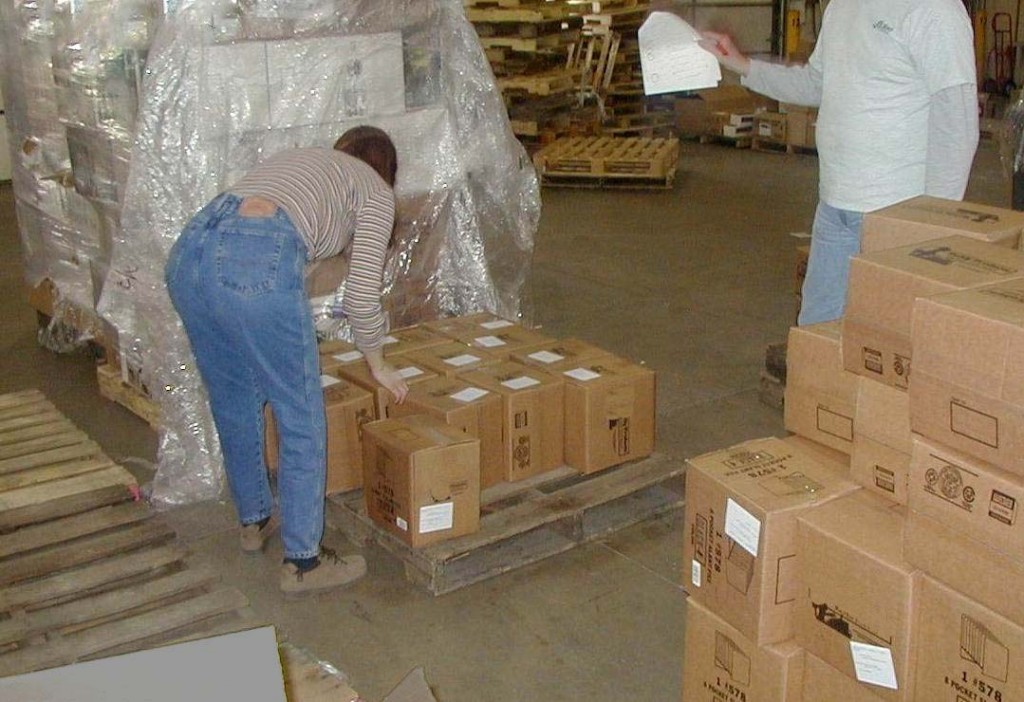 |
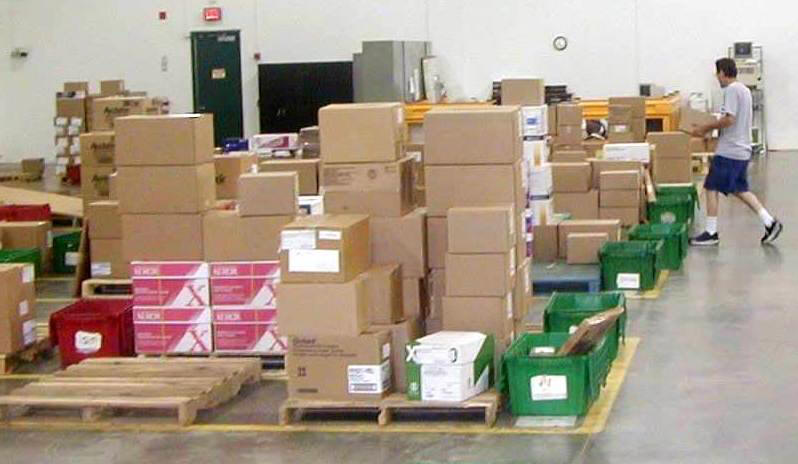 |
| Constant bending to check orders | Lifting, walking, carrying to sort orders |
Checking incoming materials often is done on the floor, which then usually requires bending done for long periods of time to open and count items. Similarly, whether in shipping or receiving, sorting is often done on the floor.
Objectives
Minimize bending to floor level. Minimize the number of manual transfers of loads.
Common options for improvement
Checking
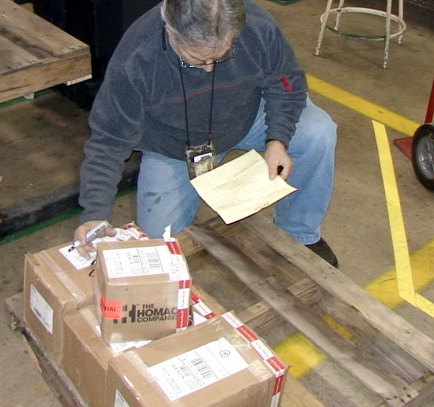 |
|
| Before: Work on floor |
A variety of methods can be used to raise items off the floor, including conveyors, lifter-transporters, pallet lifts, and lift trucks (especially “walkie” fork lifts).
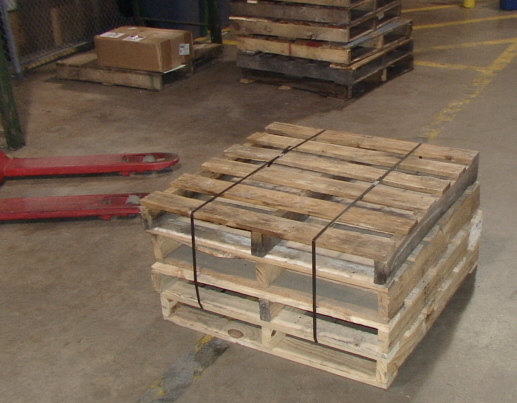 |
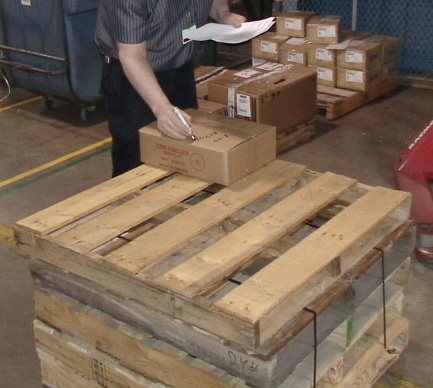 |
| Stack of pallets strapped together | |
A simple checking station can be made with items close at hand. A stack of pallets strapped together is essentially cost free, yet is effective as a method for getting the work off the floor.
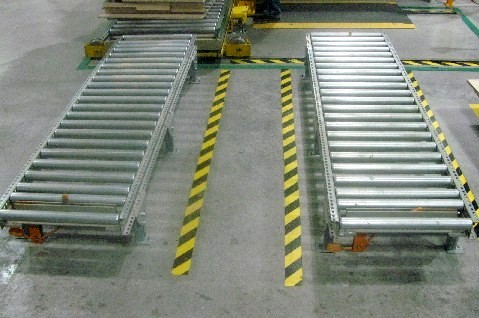 |
| Raised conveyors for checking and transfers |
In the example above, fork trucks are used to bring pallets of incoming products for checking. The two sets of conveyors raise the working height and facilitate moving and transferring checked items.
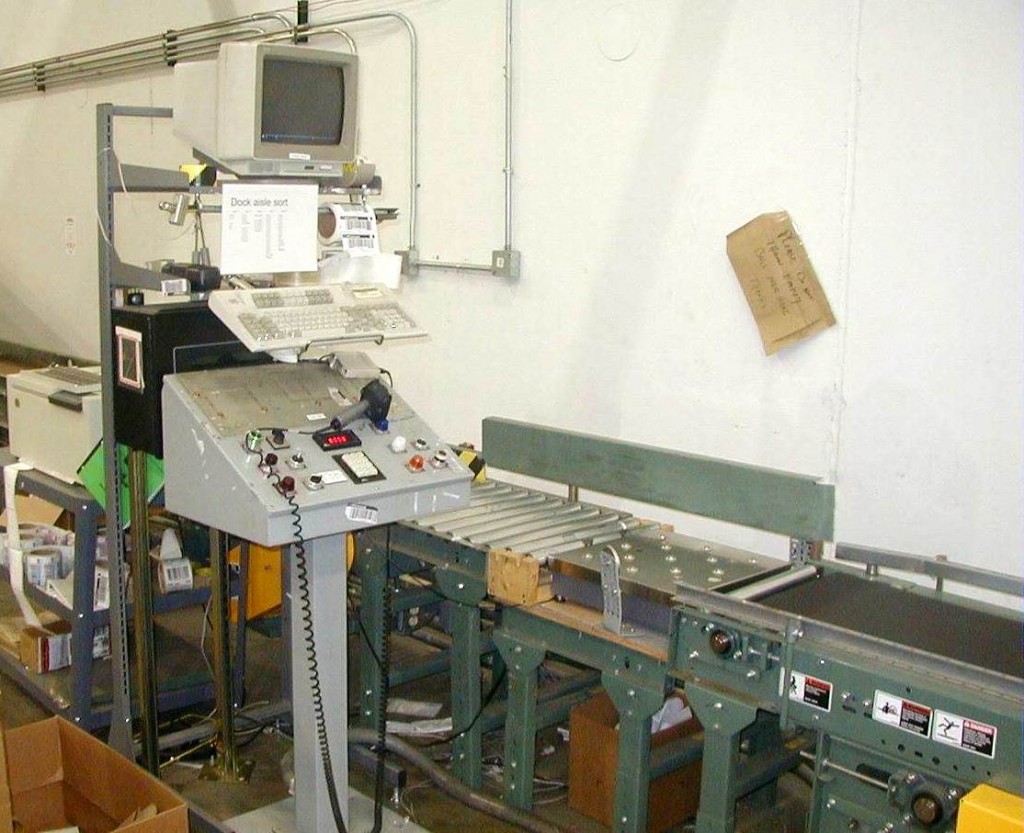 |
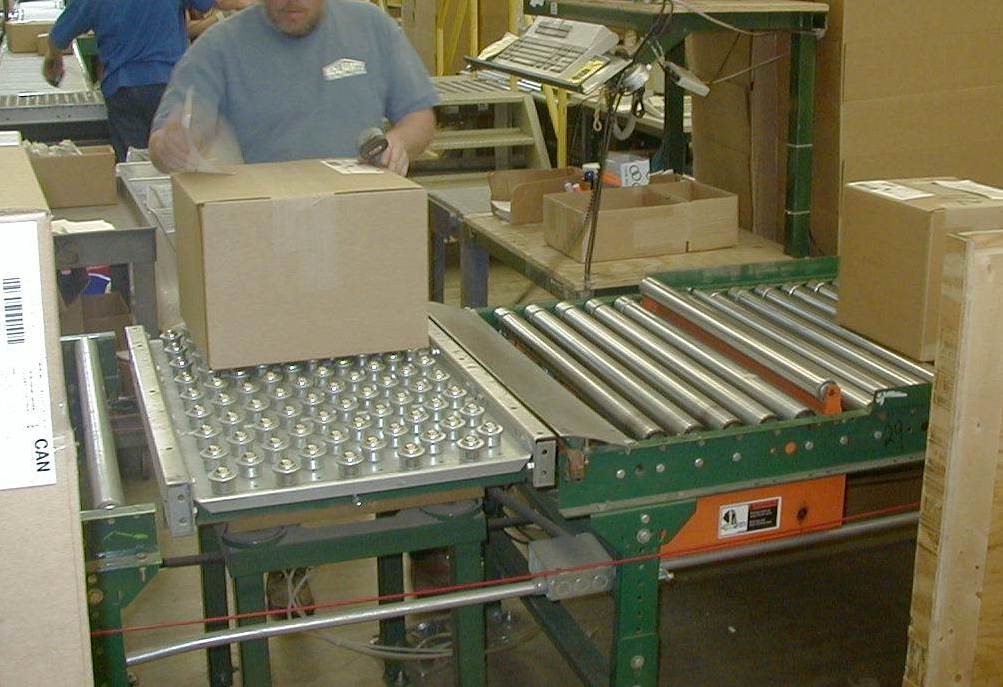 |
| Checking stations integrated into conveyor system | |
Checking and sorting tasks should be integrated with the material handling system for loading and unloading, thus the choice for equipment depends on the overall strategy. When conveyors are used to unload trucks/trailers, then it can be relatively easy to provide checking stations integrated into the conveyor system. Thus, bending is eliminated, which facilitates fast and easy work.
Sorting
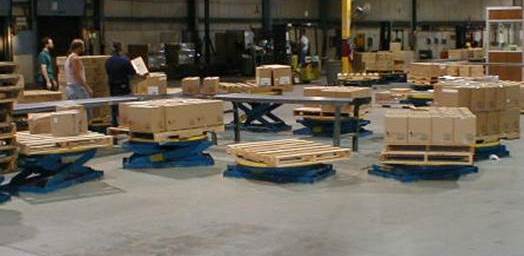 |
| Sorting: single conveyor to 10 pallet lifts |
Whether in shipping or receiving, sorting is best done using pallet lifts, conveyors, lifter-transporters, etc. As shown above, a single conveyor is configured to facilitate sorting into 10 pallet lifts. However, if a large number of sorts is required, it can be a challenge to provide the sheer number of pieces of equipment that are needed. Note that the pallet lifts eliminate the need to bend down, but do not eliminate the need to pick up and carry each box.
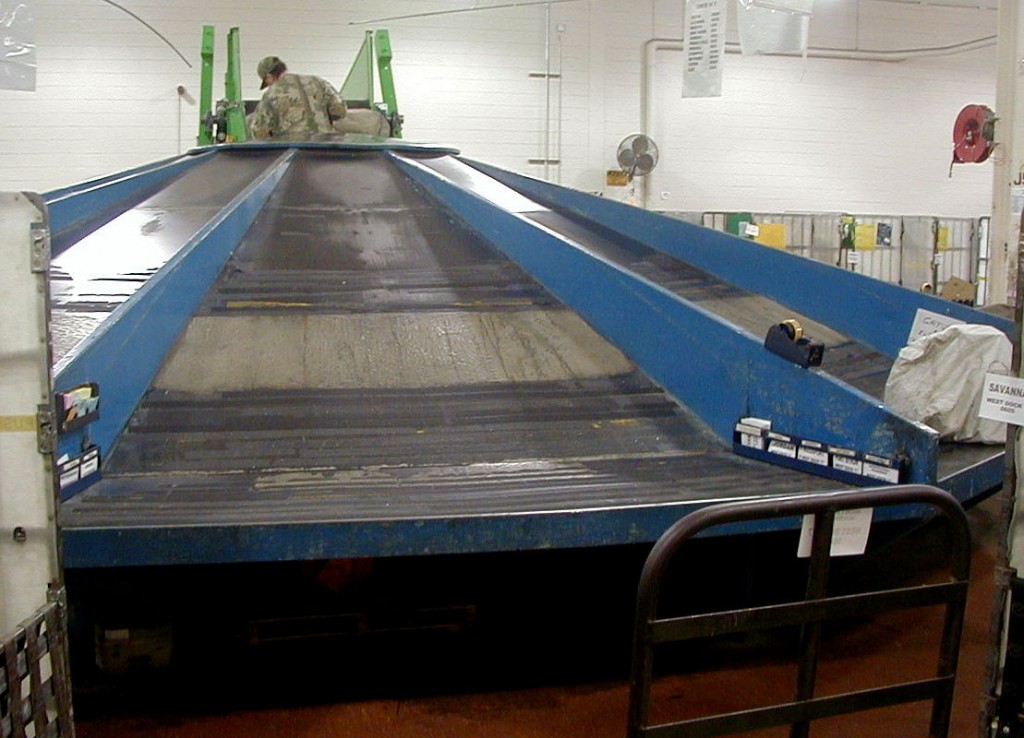 |
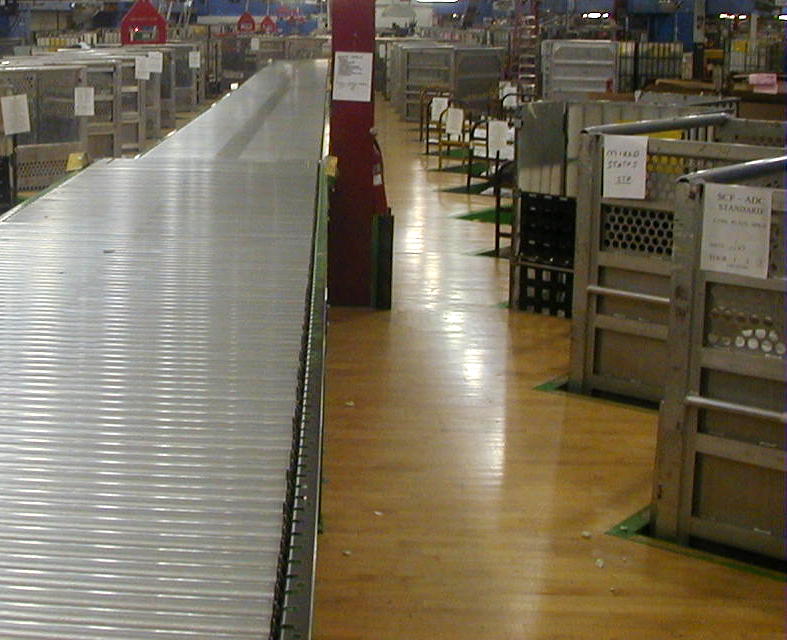 |
| “Crow’s nest” | “Sawtooth” |
The U.S. Postal Service has developed two unique approaches to solve the problem of sorting into multiple containers in receiving. The methods are designed for sorting sacks of mail and would need to be adapted for use in other settings. However, they provide alternative ideas that may prove helpful in other settings.
The “crow’s nest” is somewhat outdated, but still worth considering because of its low tech approach. Sacks of mail are brought up to the center “nest” using an inclined conveyor, then pushed into the appropriate section. The sacks slide down to a surface that is at a good height for sliding into carts. Lifting and carrying is minimized, if not completely eliminated.
The “sawtooth” is so named because of the configuration of the platform with offset slots for large container carts. Sacks of mail are picked up from the main conveyor and placed in the designated container. The system is designed to facilitate rolling the sacks to a point close to that container. Lifting and carrying is still required, but bending is minimized.
